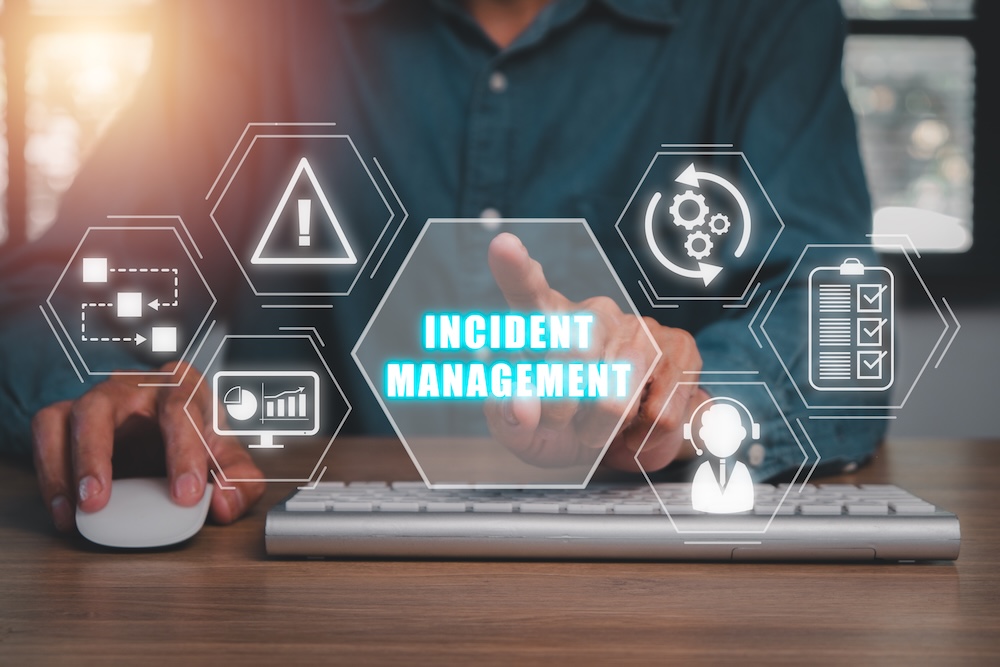Disruptions to your business are not a matter of if—they’re a matter of when. Whether it’s a cybersecurity breach, system failure, data loss, or operational breakdown, organizations must be prepared to act swiftly and decisively. That’s where a well-structured Incident Response Plan (IRP) becomes indispensable. More than just a crisis management tool, an IRP is your strategic roadmap to minimizing impact, maintaining continuity, and protecting your organization’s reputation and assets.
At PMCS, we help organizations design and implement IRPs that are proactive, precise, and aligned with your unique risk landscape—so when a crisis strikes, you’re not reacting in panic, you’re responding with purpose.
Why Every Organization Needs an Incident Response Plan
An Incident Response Plan (IRP) is a structured, strategic approach that organizations use to detect, respond to, manage, and recover from unexpected events or security incidents—such as cyberattacks, data breaches, system failures, or natural disasters.
In simple terms: It’s your organization’s emergency game plan for when things go wrong, ensuring that the right people take the right actions at the right time to minimize damage and restore normal operations quickly and effectively.
A solid Incident Response Plan equips teams with the clarity and structure needed to respond to disruptions efficiently. Without a plan, even minor issues can escalate quickly, causing operational delays, financial losses, and reputational damage. But with a properly executed IRP, organizations can:
-
Contain threats before they spread
-
Reduce recovery time and cost
-
Maintain stakeholder trust and transparency
-
Ensure compliance with regulatory standards
-
Preserve business continuity
Whether you’re a small agency or a large enterprise, having a documented and tested plan gives you control when uncertainty hits.
Core Elements of an Effective Incident Response Plan
A comprehensive Incident Response Plan spans the entire lifecycle of a crisis—from initial preparation to long-term recovery. Here are the critical stages:
1. Preparation and Prevention
The foundation of any IRP lies in readiness. This includes identifying potential risks, defining response roles, establishing communication protocols, and ensuring your team is trained. Preparation also involves building detection systems and integrating tools that can help you identify threats in real-time.
2. Detection and Identification
Recognizing an incident early is essential. The IRP should detail how to detect anomalies and outline clear criteria for what qualifies as an incident. Timely identification enables faster containment and reduces the window for damage.
3. Containment and Mitigation
Once a threat is confirmed, containment is the next priority. Your plan should include immediate short-term steps to isolate affected systems or processes and prevent further spread. Simultaneously, long-term mitigation strategies should aim to stabilize operations while minimizing impact on customers and stakeholders.
4. Resolution and Recovery
An IRP should clearly map out the recovery process—restoring data, systems, and services to full functionality. This phase involves coordinating internal teams, managing external communications, and validating system integrity before resuming normal operations.
5. Post-Incident Analysis
Once the crisis is resolved, it’s critical to conduct a detailed review. What went wrong? What worked well? What can be improved? This stage ensures that each incident becomes a learning opportunity and that future responses are stronger, faster, and more informed.
Strategic Planning and Flexibility in Incident Response
An Incident Response Plan must be more than a static document. To be truly effective, it should evolve alongside your organization and the threats it faces. That means:
-
Tailoring response strategies to specific risks (e.g., cyberattacks vs. physical breaches)
-
Regularly updating protocols based on industry trends and organizational changes
-
Building in flexibility to adapt to unpredictable or hybrid crisis scenarios
-
Collaborating across departments to ensure buy-in and readiness across all levels
PMCS works with organizations to craft IRPs that aren’t just comprehensive, but also agile and actionable.
The Role of Training and Simulation Exercises
Even the best-written plan can fail without proper execution. That’s why ongoing training and simulation exercises are vital to ensuring your Incident Response Plan works under pressure. These activities:
-
Reinforce team roles and responsibilities
-
Improve response speed and accuracy
-
Expose potential blind spots or weaknesses in the plan
-
Build confidence in crisis leadership
At PMCS, we conduct live simulation drills that mirror real-world scenarios, helping clients stress-test their plans and refine them in controlled environments.
Incident Response as a Strategic Advantage
Forward-thinking organizations view their Incident Response Plan not just as a safety net—but as a strategic asset. A robust IRP can:
-
Strengthen vendor and customer relationships through transparency and accountability
-
Support compliance with data privacy and industry regulations
-
Demonstrate operational maturity to investors and stakeholders
-
Serve as a competitive differentiator in high-risk sectors
Investing in incident preparedness now pays off exponentially when the unexpected occurs.
Resilience Starts with a Plan
Crises don’t wait for you to get ready—they demand readiness from day one. A strong Incident Response Plan empowers your organization to face disruption with structure, confidence, and control. At PMCS, we help our clients develop customized IRPs that reflect the complexity of their operations and the realities of their industry.
If your organization is ready to take a proactive step toward resilience, we’re here to help you build a smarter, faster, and more reliable response.
Let’s prepare for what’s next—together.





